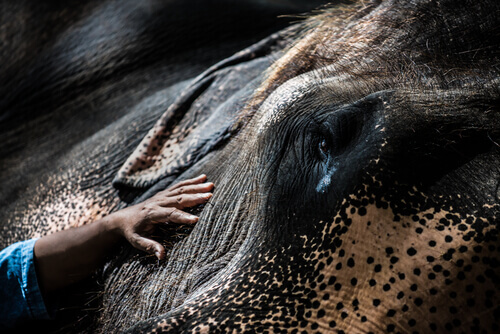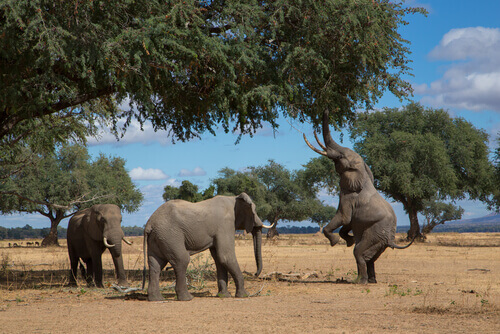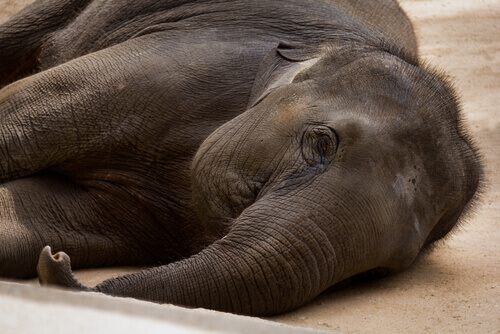Special Facilities for Elephants in Captivity

The captive breeding of wild animals has been a common practice for generations. This is the case with elephants, animals that people admire for their beauty, size, strength, and intelligence. Breeding centers and zoos that house these animals have all kinds of facilities for elephants in captivity.
Due to the needs and capacities of animals of this size, the people in charge of designing buildings to keep these animals must take lots of things into consideration, such as the height of the ceilings and the resistance of the materials.
Fixed installations for elephants in captivity
How tall are they?
Male adult African elephants can grow over 20 feet. If space allows, they also like to stand on their hind legs. Therefore, a structure for containing these animals has to have a minimum height of 25 feet.
This also means that any light, fan, cables, surveillance cameras, or fragile items need to be positioned at 25 feet. These items, if placed below 23 feet, could pose a danger or, at least, they should be protected with metal.

And what about doors?
Throughout history, people have designed many types of doors and systems of moving them with animals in captivity in mind. For elephants, the key points to keep in mind would be:
- The strength of the material
- How quickly the door opens and closes
- How the operator is able to open and close the door
Also, if a door is made of solid, opaque material, it doesn’t allow visual or tactile contact with other elephants. It’s necessary to allow for this contact since elephants are naturally social animals. However, this creates a significant structural challenge.
Special facilities for elephants in captivity: Advantages and disadvantages of the different types of doors
In reference to door designs, there are two options:
- A door with horizontal bars. However, this can cause the animal to try and climb up or support itself on the structure, which can cause the door to break or injure the elephant.
- A door with vertical bars, which must be able to resist the lateral movements of the elephant’s head or trunk.
As you can see, any option has risks. The strength of the material is also essential.
As for the mechanism for door movement (hydraulic, pneumatic, electric, or manual), this usually depends on available funds. For example, hydraulic doors must use animal-safe fluids, such as non-toxic vegetable oils or petroleum products.
In any case, any automatic door system must also have a manual option in case of a power outage.
What problems are caused by a bad door design?
Many doors have damaged elephants’ trunks while they’re closing, especially hydraulic ones. It’s essential that the operator can see the door closing completely to prevent any damage to the animal.
We also strongly recommend that there are protocols to train elephants to pass through the doors, to avoid injury. After all, these are easy actions to teach and provide a lot of safety for the animal and their keepers.
Elephant restraint devices
Restraining elephants is a critical part of the captive breeding and housing process. Caretakers must train the elephants to accept restraint, regardless of what method they use. However, it’s also important to restrain them well when performing certain maintenance or health procedures.

Special facilities for elephants in captivity: Mobile devices for transport
There are two basic options for containment during transport: containers and trailers. In the first case, elephants are loaded into individual containers which are then placed on the means of transport. In the latter case, the elephants are secured inside a trailer.
The key to success is that the elephant has previously been inside that particular means of transport. The more comfortable the elephant is in the space, the less stressful transporting will be.
All cited sources were thoroughly reviewed by our team to ensure their quality, reliability, currency, and validity. The bibliography of this article was considered reliable and of academic or scientific accuracy.
- Fowler M, Mikota S. Biology, Medicine, and Surgery of Elephants. Hoboken: John Wiley & Sons; 2008.
